In spring 1863, as Gen. U.S. Grant plotted his attack on Vicksburg, he traveled into Mississippi’s interior, knowing he needed to sever the Confederate’s railroad connection between Vicksburg and Jackson. During that time, he transported reinforcements and supplies along the rural road between Grand Gulf and Raymond. “The genius of the campaign is out there in the fields and the woods where most people don’t go,” said retired Brig. Gen. Parker Hills, president of the Mississippi Civil War Sesquicentennial Commission, in a September 16, 2013, Vicksburg Post article. “We hope folks get out there and look at where the gray matter was burned not just where the gun powder was burned.” Parker was instrumental in establishing the 18 historical markers that today interpret the 50-mile route, which is paved but otherwise remains nearly as it looked in Grant’s day. If you’re short on time, focus on the 11 markers below.
[markers 1 and 2]
Grand Gulf
Grand Gulf Town Square
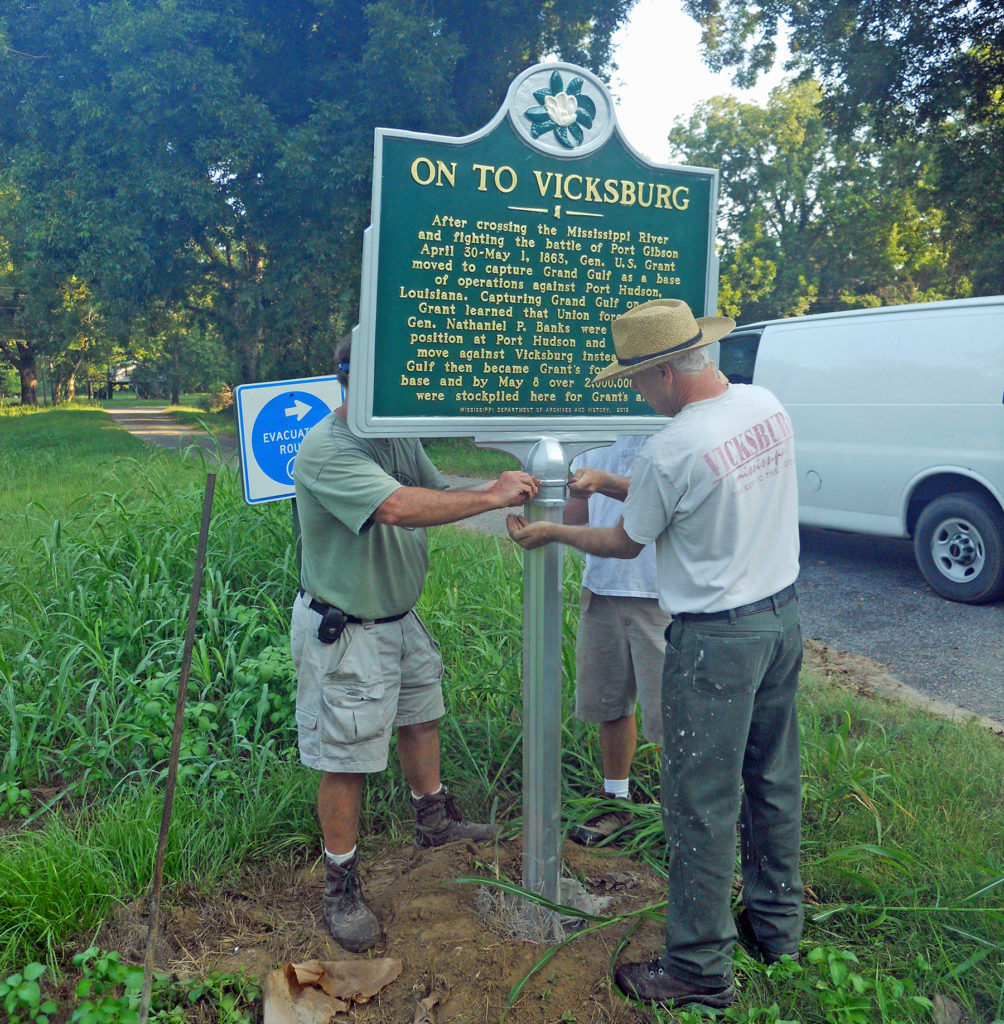
Upon visiting the town of Grand Gulf on May 3, 1863, Grant decided to capture Vicksburg instead of supporting Federal operations at Port Hudson. Grand Gulf then became the Union’s main supply depot for the ensuing Vicksburg Campaign, where two million rations were stockpiled and some 200 wagons per day set out to resupply Grant’s army. Grand Gulf had been burned by the Union navy in 1862, and today not much remains of the old town. However, the site is now part of Grand Gulf State Park, which is one of the best-kept secrets in Mississippi.
[markers 5 and 6]
Grant at Hankinson’s Ferry
Intersection of Old Port Gibson Road and Old Hwy. 61
Trace Grant’s route on the winding road out of the Mississippi River Valley, through the loess bluffs. Although the road generally was a supply route, that is not to say there wasn’t any fighting. On May 3, 1863, General Grant divided his force, with the XVII Corps advancing on Hankinson’s Ferry, 5 miles north. Gen. M. M. Crocker’s division came across a Confederate roadblock at Kennison Creek held by Col. F.M. Cockrell’s Missourians, and a clash ensued. Cockrell eventually was forced to retreat, and the 20th Ohio reached Hankinson’s Ferry just as the Confederates were attempting to cut loose the flatboat-bridge. The Ohioans took control of the bridge, a move that allowed Grant to send patrols across the Big Black River and, on May 5, north on the Vicksburg road. Early on May 4, Grant established his headquarters at Mrs. Bagnell’s, 3.5 miles north of this marker, and the next day sent forces to reconnoiter toward Vicksburg and Jackson. While at the Bagnell house, Grant learned that Confederate reinforcements were coming by rail from points east and south, so he decided on May 6 to sever the Southern Railroad of Mississippi, the Confederate line of communication. On May 7, he started moving northeast toward the railroad east of Vicksburg.
[marker 7]
Federals Occupy Rocky Springs
Old Port Gibson Road at Rocky Springs Church
After planning much of his campaign at Mrs. Bagnell’s, 4 miles west, Grant arrived at Rocky Springs on May 7, 1863. He remained here until May 10, giving time for Sherman’s XV Corps, which had remained behind to guard the forward supply base at Milliken’s Bend in Louisiana, to cross the Mississippi River and rejoin the army. McClernand’s XIII Corps arrived here on May 6 and moved to Little Sand Creek, 1.5 miles northeast, then on May 7 to Big Sand Creek, 3 miles northeast. Grant reviewed McClernand’s men at Big Sand Creek on May 8.
[marker 9]
Concentration of Troops
Old Port Gibson Road, near Ross Rd. Intersection at Big Sand Creek
Three divisions of XIII Corps camped here on May 7-9, 1863, with a reserve division at Little Sand Creek, 2 miles southwest. More maneuvering ensued, including the XVII Corps marching through Reganton (1863 Crossroads) and turning toward Utica on May 9. By the end of May 9, Grant had more than 35,000 soldiers gathered within 5 miles of Rocky Springs.
[marker 11]
Final Plans at Cayuga
Old Port Gibson Road just past Cayuga Rd. intersection
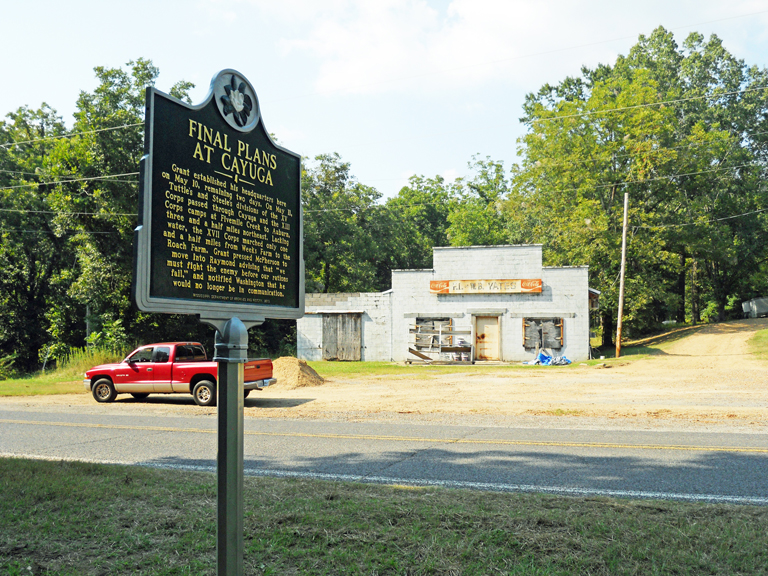
Grant moved his headquarters to Cayuga on May 10, 1863, where he remained for two days, allowing Sherman’s XV Corps to pass from the rear of the army through McClernand’s XIII Corps, which had encamped 2 miles to the east of here at Fivemile Creek. This movement placed McClernand on the left, Sherman in the center, and McPherson on the right of the army. On May 11, Grant sent a message from here to McPherson, who was 8 miles southeast at the Roach farm and had fallen behind the rest of the army. He directed McPherson to march “with all activity into Raymond,” advising that “we must fight the enemy before our rations fail.” He contacted Washington, stating that, because of the ever-increasing distance from Grand Gulf, he would no longer be in communication.
[marker 14]
Contested Crossing
Old Port Gibson Road at Fourteenmile Creek Bridge
Grant and Sherman arrived here on May 12, 1963, with Steele’s and Tuttle’s divisions of the XV Corps to discover that a detachment of Col. Wirt Adams’ Mississippi cavalry had fired the bridge across Fourteenmile Creek. A firefight followed between Adams’ troopers and the 4th Iowa Cavalry. Wood’s Brigade of Steele’s Division and a 6-gun Union battery came up and went into action, securing the bridgehead by 11 a.m.
[marker 15]
Change of Plans
Old Port Gibson Road at Dillon’s farm
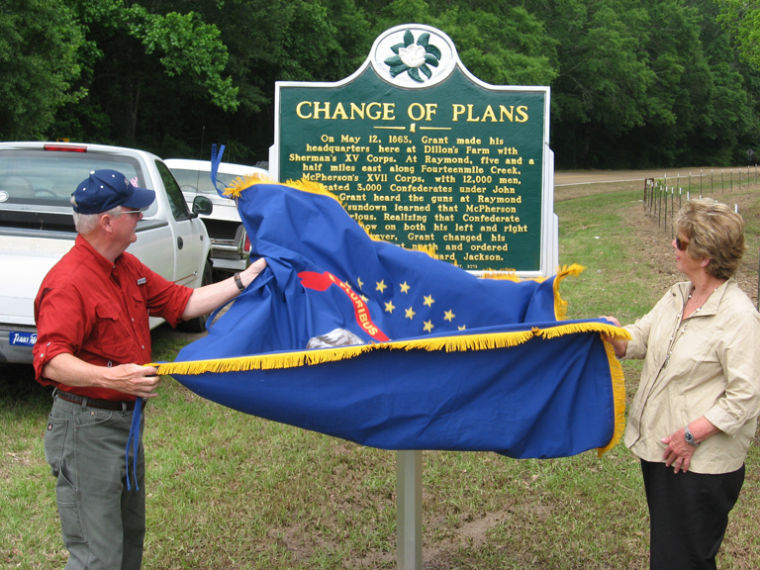
Grant and Sherman headquartered here at Dillon’s Farm on May 12, 1863. Grant heard the guns at Raymond, and a few hours later learned that McPherson was victorious. He quickly realized that Confederate forces would be on his left and right flanks if he moved north to the railroad, so he changed his scheme of maneuver. That night he ordered the army to march toward Jackson on May 13 to drive out Joseph E. Johnston’s Confederates, which were arriving by rail. During this movement, McPherson was to march north to Clinton to cut the railroad and prevent any Confederate reinforcements from reaching Vicksburg.
[marker 17]
Raymond Confederate Cemetery
Port Gibson Street, Raymond
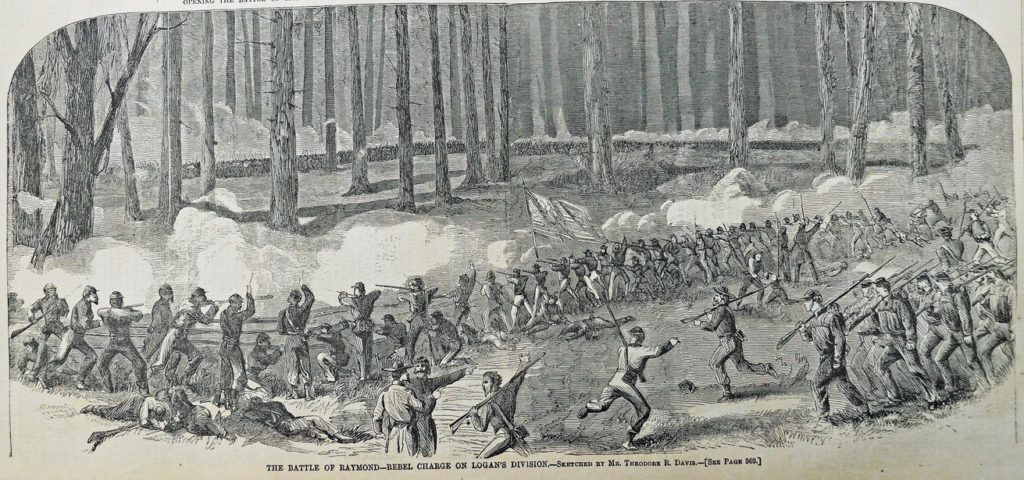
Both the Confederate and Union soldiers killed outright at the Battle of Raymond on May 12, 1863, were buried on the battlefield, while many of those who later died from their wounds were buried near the makeshift hospitals in town. In 1866 the estimated 200 Union dead were disinterred and moved to the Vicksburg National Cemetery, while the estimated 300 Confederate dead were laid to rest by the citizens of Raymond in the Raymond Cemetery.
[marker 18]
Raymond Courthouse
Main Street, Raymond
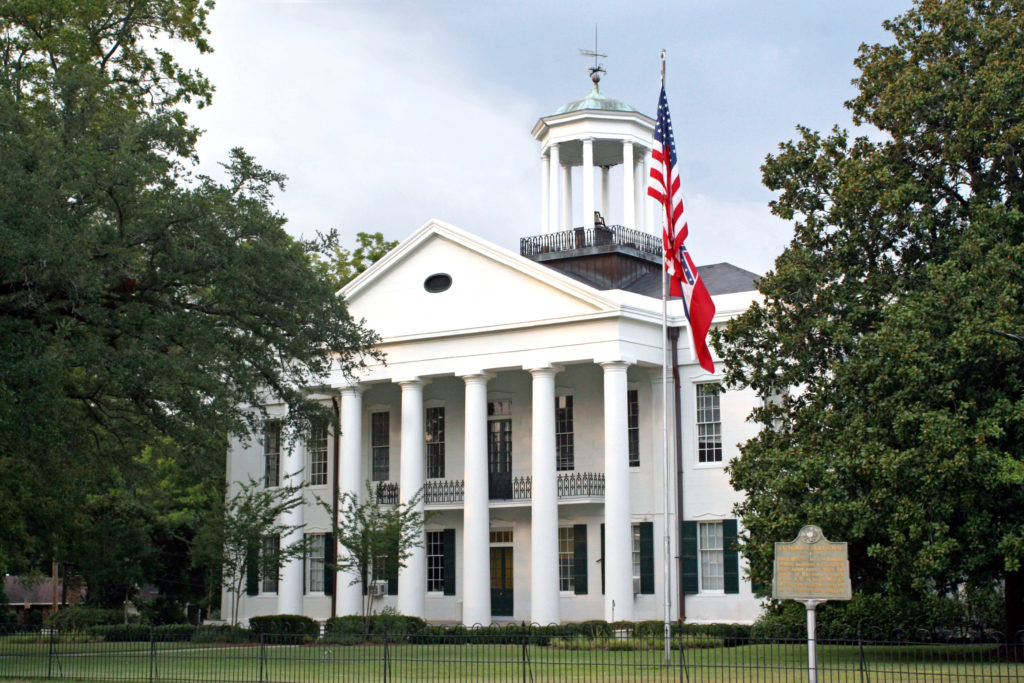
At the end of the scenic byway you’ll reach the picturesque town of Raymond. Here, the antebellum courthouse, built in 1857-59 by the famous Weldon brothers with skilled enslaved laborers, served as a Confederate hospital following the Battle of Raymond. Just across the street, St. Mark’s Episcopal Church (marker 19) served as one of the many Union hospitals, with cotton scattered on the floor to serve as makeshift mattresses.
Access I-20 via Clinton-Raymond Road, which exist the town square to the north.
All photos courtesy of Parker Hills unless otherwise noted.
